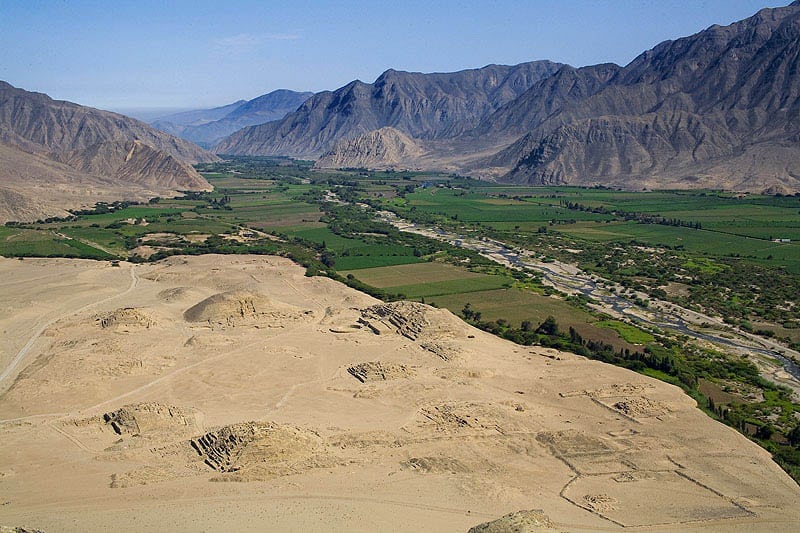Skift Take
The Sacred City of Caral-Supe in Peru is undoubtedly worth a visit, but there are no signs that it is about to be overrun with tourists. In fact, there are few signs on the Pan-American Highway to even help people find it.
Travel expert Arthur Frommer, speaking at the recent The New York Times Travel Show in Manhattan, pegged Peru’s Sacred City of Caral-Supe, which some say may pre-date the Egyptian pyramids, as one of the hottest destinations for 2013.
Frommer cited the 5,000-year-old archeological site (along with China, Ireland, Oslo, India, Dubai, Miami Beach, Colorado, Washington and New Orleans) as among this year’s trendy destinations, and he characterized Caral, which was added to the UNESCO World Heritage List in 2009, as poised for a “bandwagon rush.”
As such, the Empedrada Fundo Hotel & Spa, a 5-star property with 22 rooms in Caral that’s slated to open in a few months, is the only hotel right on the scene, and could be poised to become the busiest hotel in the world if you accept the notion that hordes of tourists are about to descend on what UNESCO says is the “oldest center of civilization in the Americas.”
But, so far, there are absolutely no signs that the Sacred City of Caral-Supe, discovered in 1948, is about to rival any of the world’s hot destinations — or even other sites in Peru, such as Machu Picchu.
For the first 11 months of 2012, some 3,747 foreigners visited Caral, according to the Peruvian government, and that was on pace to be a decrease from the 5,386 foreigners who visited the historic site in 2011.
The challenge for the Sacred City of Caral-Supe is that it is located a little more than 100 miles north of Lima on a dusty desert plateau overlooking the Supe River, but effectively in the middle of nowhere with no infrastructure to support tourism. There is little or no signage on the Pan-American Highway to alert tourists to its whereabouts.
Betty Mora, a spokesperson for the Empedrada Fundo Hotel & Spa, says she knows of no other hotels under development in Caral, although there are a handful of 3-star properties about a half-hour away in Barranca if the tourists ever come in meaningful numbers.
The vast majority of visitors to Caral — 50,637 of the 54,384 from January through November 2012 — were Peruvians.
The Sacred City of Caral-Supe is far-removed from the more popular Machu Picchu to the southeast.
“Caral is just not receiving that many visitors,” Rick Vecchio, director of development and marketing at Fertur Peru Travel in Lima, told Skift.
Vecchio says the travel agency handles perhaps a few dozen tourists heading to Caral from Lima annually, and most visit as a day trip, or as a stop on the way toward more popular destinations such as Chiclayo and Trujillo further north.
There is a lot of heightened interest in Peru as a destination as major international hotel brands consider development to handle surging demand, but there are other sites in the country, such as Huaca de la Luna, Tucume and Kuelap that might be more attractive bets as Machu Picchu alternatives.
Machu Picchu, which features about 70% original construction, is considered the crown jewel of architectural sites in South America, and there are others within a couple of days travel.
At Caral, meanwhile, the vast majority of the artifacts are restored rather than in their original state, which, along with its isolation, may hurt its allure.
The Daily Newsletter
Our daily coverage of the global travel industry. Written by editors and analysts from across Skift’s brands.
Have a confidential tip for Skift? Get in touch
Tags: peru
Photo credit: The Sacred City of Caral-Supe in Peru became a UNESCO World Heritage Site in 2009. Edgar Asencios / Flickr.com
